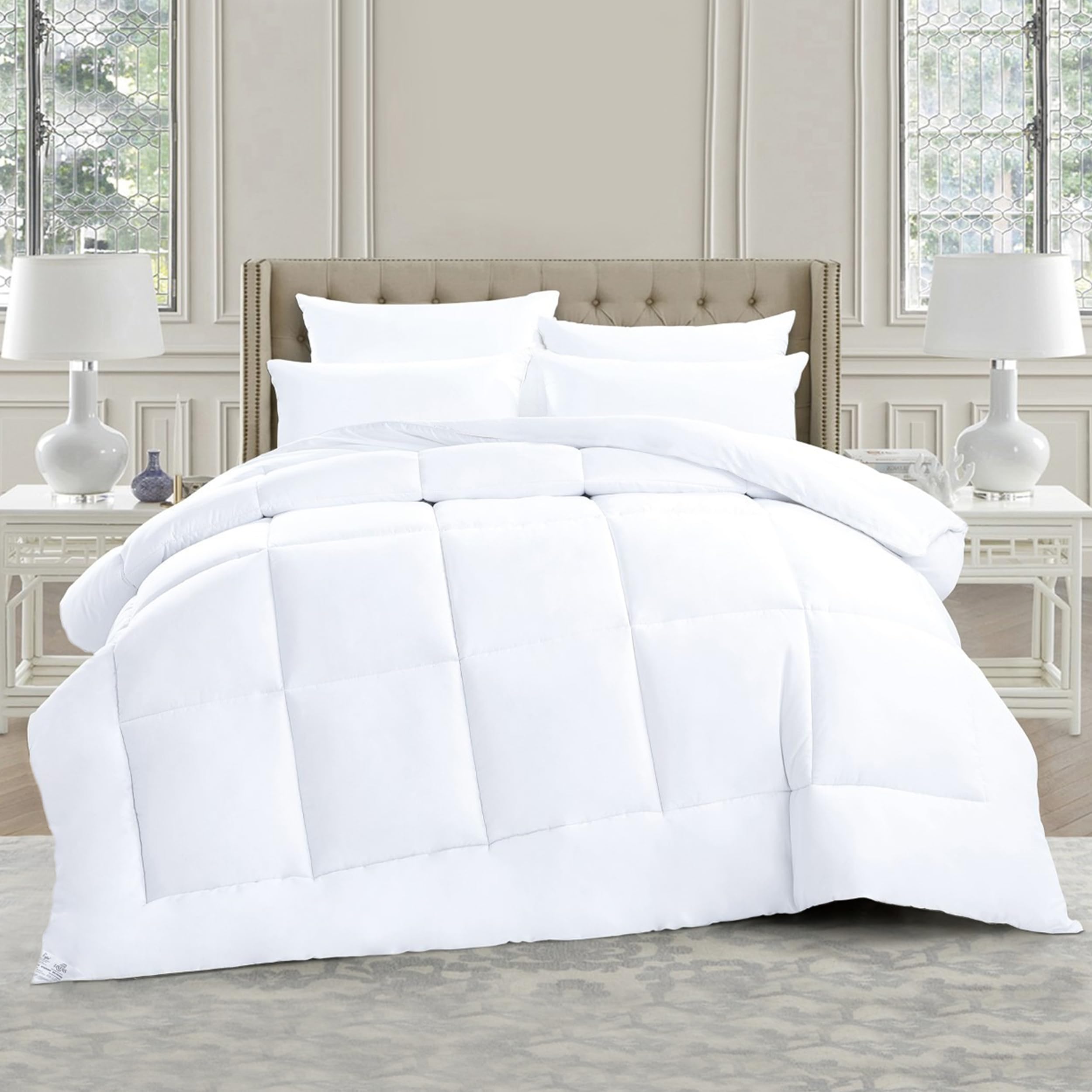Washing a duvet at home is convenient until you discover your machine will not spin a bulky insert. Many UK households have 7 kg drums that struggle with doubles and kings. This guide shows how to tell if a duvet will fit, smart tricks that help smaller machines cope, when to use a laundrette, and how to dry thoroughly so the insert stays fluffy and fresh.
Seasonal warmth usually comes from duvets that balance weight and airflow in UK bedrooms.
Check size, fill, and drum capacity
Look at your washing machine’s capacity. A 7 kg drum comfortably handles single duvets and some light double synthetics. King size and most down inserts need larger drums. Weighing a duvet is not enough because trapped water increases the load dramatically. The practical test is space. If the duvet fills the drum so tightly that it cannot tumble, it will not wash or rinse well. Do not force it. You risk a poor clean and stress the motor.
Make the most of a small machine
If your duvet is on the edge of what the drum can handle, choose a gentle cycle, cool or warm water, and a slow spin. Use a small amount of mild detergent and run an extra rinse to clear residues. Stop the cycle if the machine struggles or thumps. Washing a duvet with nothing else in the drum reduces friction and gives fabric room to move. If you have to push to close the door, switch to a laundrette plan.
When a laundrette is the better choice
Laundrette machines have larger drums and stronger extraction. They clean more evenly and spin water out thoroughly so drying is faster. This matters for down and feather, which clump when damp. Even synthetic doubles benefit from better movement in a big drum. Bring tennis balls or dryer balls for drying, and follow the label for temperatures. Staff often advise on the best settings for duvets.
Drying fully is non negotiable
A damp duvet smells musty and will not feel warm. Tumble on low with dryer balls, checking every fifteen to twenty minutes to break up clumps. For down and feather, allow several cycles, then finish by airing flat in a warm, ventilated room. For synthetics, drying is faster but still needs checks. Do not cover a radiator with a damp duvet for hours; trapped moisture leads to odours.
Spot cleaning and airing between washes
Reduce full washes by spot cleaning small marks and airing the duvet on dry days. Use a removable cover and wash it weekly. These habits keep duvets fresh and make the few trips to the laundrette worthwhile rather than frequent chores in a small drum that never quite clean the insert.
We highlight machine friendly inserts and breathable covers in our guide to duvets that wash well. Pair with cool sheets and a washable protector for a simple weekly routine.
FAQs
Can I wash a king size duvet in a 7 kg machine?
Usually no. Use a laundrette with large drums. Singles and some light double synthetics are the upper limit for many home machines.
How do I know if the duvet is dry inside?
Feel for cool, damp patches and weigh it in your hands. If it feels heavier than expected or cool to the touch, keep drying. Break up clumps with dryer balls.
Is hand washing a duvet a good idea?
Only for small inserts. Large duvets are hard to rinse and wring by hand. Use a laundrette for thorough cleaning and drying.





